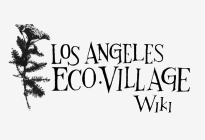- GREEN CONSTRUCTION & TECHNOLOGY CREDITS
- GCT Credit 2: Energy Efficiency in Buildings 1 to 3 Points
Intent: Encourage the design and construction of energy efficient buildings to reduce air, water, and land pollution and environmental impacts from energy production and consumption.
Potential Technologies & Strategies Overview
Four fundamental strategies can increase energy performance: reduce demand, harvest free energy,increase efficiency, and recover waste energy.
- GCT Credit 2: Energy Efficiency in Buildings 1 to 3 Points
1. Reduce Demand. Accomplish demand reduction by optimizing building form and orientation,
by reducing internal loads through shell and lighting improvements, and by shifting load to offpeak periods.
2. Harvest Free Energy. Harvesting site energy includes using free resources such as daylight,ventilation cooling, solar heating and power, and wind energy to satisfy needs for space conditioning, service water heating and power generation.
3. Increase Efficiency. Increasing efficiency can be accomplished with more efficient envelope,lighting, and HVAC systems, and by appropriately sizing HVAC systems. More efficient systems reduce energy demand and energy use.
4. Recover Waste Energy. Waste energy can be recovered through exhaust air energy recovery
systems, graywater heat recovery systems, and cogeneration. When applying these strategies, it is important to establish and document energy goals and expectations, and apply modeling
techniques to reach these goals. SEE section
GCT Credit 3: Reduced Water Use 1 to 3 Points
Intent: Minimize water use in buildings and for landscape irrigation to reduce the impact to natural water resources and reduce the burden on municipal water supply and wastewater systems.
Requirements:
OPTION 1 – INDOOR (1 to 2 points)
Design and construct at least 90% of all buildings in the project such that they meet one of the following requirements according to the appropriate category (1 point):
Category 2: For residential buildings 3 stories or fewer:
Comply with 2 out of 3 of the following requirements: (or all for more points)
• The average flow rate for all lavatory faucets must be ≤ 2.0 GPM.
• The average flow rate for all shower heads must be ≤ 2.0 GPM.
• The average flow rate for all toilets, including dual-flush toilets, must be ≤ 1.3 GPF.
OPTION 2 – OUTDOOR (1 point)
For irrigation, use only captured rainwater, recycled wastewater, recycled graywater, or water treated and conveyed by a public agency specifically for non-potable uses.
OR
Install landscaping that does not require permanent irrigation systems. Temporary irrigation systems used for plant establishment are allowed only if removed within one year of installation.
Stage 2
Option 1
· An estimate of baseline indoor water use based on the type and number of buildings in the project.
· A written commitment to employ indoor water use reduction strategies to meet the requirements of the credit as appropriate to the number of points attempted if the project is built.
Option 2
· A site plan indicating areas of outdoor water use.
· A written commitment to employ outdoor water use reduction strategies to meet the equirements of the credit, including a list of strategies planned.
Stage 3
Option 1
· For Category 1 buildings, submit: 1) a narrative describing the strategies that were used in the buildings to reduce water use; 2) a table showing each building’s water Act of 1992; and 3) a calculation of the aggregate percentage of reduced water use for each building.
· For Category 2 buildings, submit a table showing the fixtures that were incorporated into each building that meet the flow rate specifications.
Option 2
· The total non-potable water supply in gallons available for irrigation purposes.
· A brief narrative describing the landscaping and irrigation design strategies employed by the project.
GCT Credit 9: Stormwater Management 1 to 5 Points
Intent: Reduce adverse impacts on water resources by mimicking the natural hydrology of the region on the project site, including groundwater recharge. Reduce pollutant loadings from stormwater discharges, reduce peak flow rates to minimize stream channel erosion, and maintain or restore chemical, physical, and biological integrity of downstream waterways.
Requirements
OPTION 1 – FOR PREVIOUSLY DEVELOPED SITES
Implement a comprehensive stormwater management plan for the project that infiltrates, re-uses, or evapotransporates the below-specified amount of rainfall from the project’s development footprint and other areas that have been graded so as to be effectively impervious. Arid Watersheds (less than 20” of rain/year) max 5 points for 0.75” reduction
· A site plan indicating the project’s development footprint, and the location of any planned stormwater management technologies or BMPs.
· A written commitment to develop and implement a comprehensive stormwater management plan to meet the requirements if the project is built.
· Confirmation of type of watershed.
Option 1
· A site plan indicating the size of the project and any previously developed areas (this can be done as part of the site plan listed above).
· A calculation of either 90% of the average annual rainfall or 1” of rainfall that occurs on the project’s development footprint and other effectively impervious areas.
· A calculation of the percentage of the development footprint for which runoff will be infiltrated, re-used, or evapotransporated

